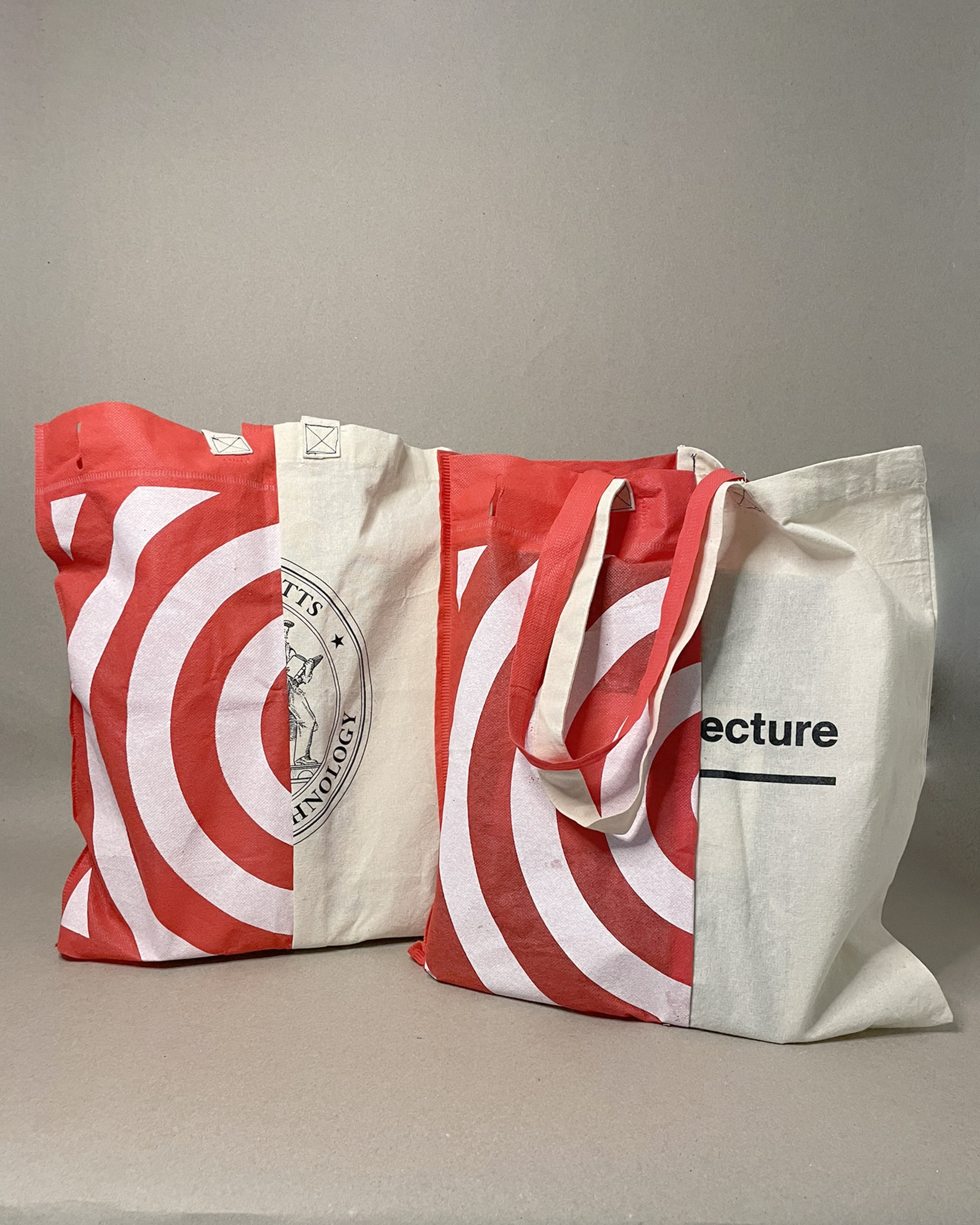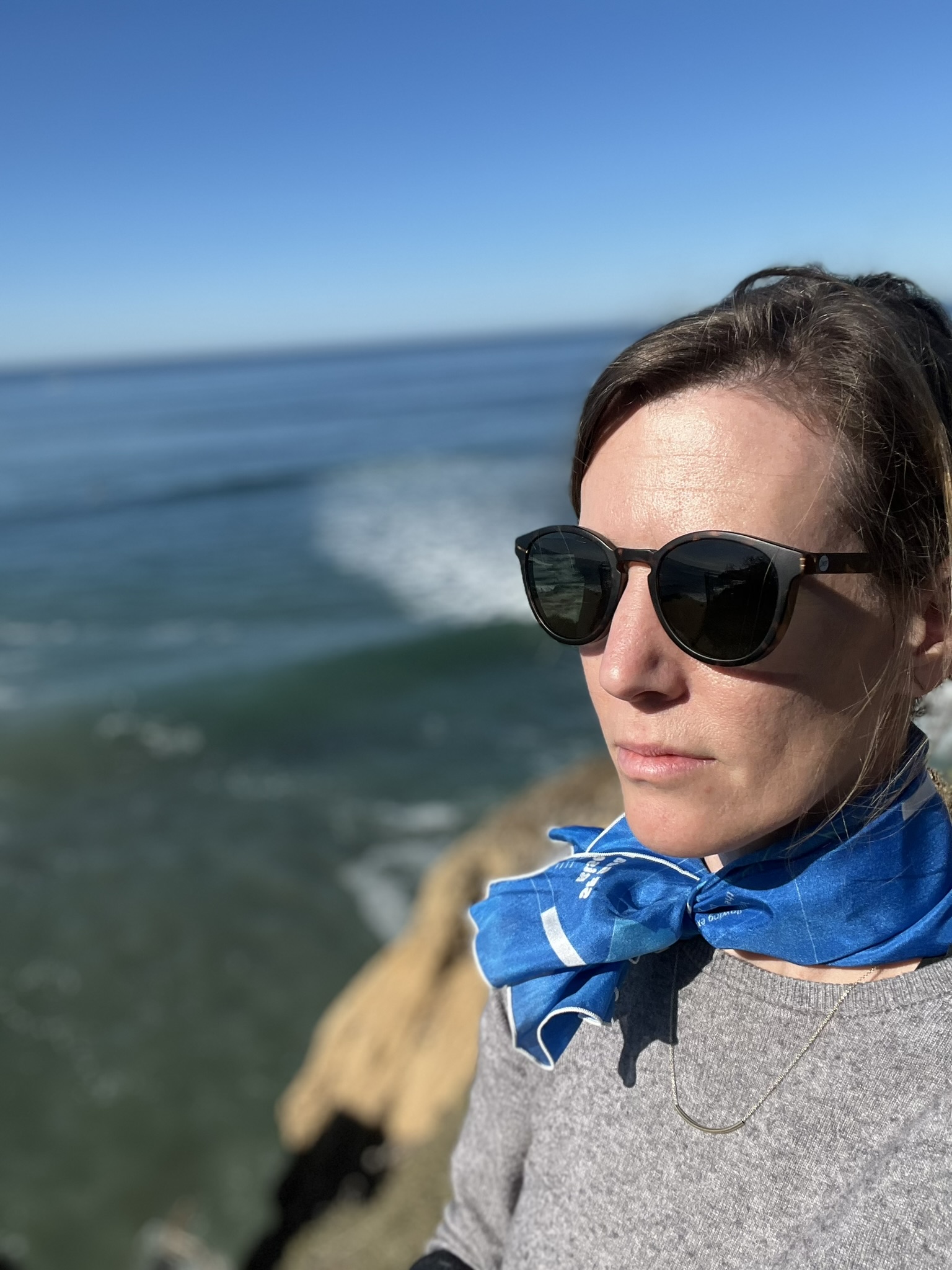FLOOR CUSHION NO. 1
MATERIAL: 100% Cotton Twill, 7.52 oz. polyester zipper, semi-firm upholstery foam.
QUALITIES: Textile, Soft, Squishy
DESCRIPTION︎︎︎
18.5” x 18.5” x 5”
A boulder was scanned through images with a mobile phone. The digital facsimilie recreates the form, color and texture of this imprecise object. This type of digital model is only enacted with a library of image and texture assets to create this projected realism. So, rather than recreating this digitized boulder as an object, the flattened image, a UV Map, that is automatically generated with the digital mesh is printed as a pattern for a square floor cushion.
RENDER: TOTE
MATERIAL: Cotton, Webbing, Plastic, Prints
QUALITIES: Textile, Containing, Wearable
DESCRIPTION︎︎︎
Render: tote is a wearable bag that allows the user to render the bag's skin according to their dressing style or surroundings. The kit comes with seven different textures, including grass, brick, concrete, leather, and various embroideries. Similar to the process of rendering an architecture scene, the user selects the desired texture map from the "library" and apply to the "object." The texture can be customized by printing images at the user's convenience (12.5" by 15"). So why buy seven different totes when you have one that does it all?
SLIGHTBOX
MATERIAL: Aluminum, slide film
QUALITIES: Recycled, Interactive, Shiny
DESCRIPTION︎︎︎
Slightbox is a backlit display frame for a single 35mm film slide.
A photon takes about eight minutes to reach the Earth from the surface of the Sun. Photons slice through the layers of film, leaving a latent image revealed later by the chemical development process. A slide captures a moment in time, a miniature vignette of a briefly illuminated world. Can we ever capture time, hold it in our hands? What do we reveal when we shine a light on the past? What memories are best left in darkness?


TOTE TOTE
MATERIAL: Recycled tote bags, thread
QUALITIES: Recycled, Textile
DESCRIPTION︎︎︎
The tote is ubiquitous in art and design culture. One part status symbol, one part marketing device, and one part handy bag, people collect and distribute totes similarly to how we used to distribute business cards. This has resulted in the Tote Tote, a bag full of bags many of us have stashed in our closets as different brands and images fall out of rotation, or when we encounter a freebie we don't need but just can't say no. Now we can have a new kind of tote tote: a tote that is a combination or reconstitution of other totes. This Tote Tote slows down the production of the tote, recycling the discards into a tote that only promotes its own tote-ness.





SEA LEVEL RISE SCARF
MATERIAL: Silk
QUALITIES: Textile
DESCRIPTION︎︎︎
21” x 21” silk
SCARF-SCARF is a limited-run scarf and bandana project exploring the relationship of garmentry and visual communication. The scarf, as seen through the lens of a statement piece made to capture an individual's attention, holds a vast amount of power in the contents that it chooses to display on its fabric. Inspired by the garment's capacity to entice and inform, SCARF-SCARF uses illustrations to education the public on topics that fall under the intersections of architecture and urbanism. Over the last year, SCARF-SCARF has produced 10 scarves focused on architectural themes.
This newest scarf, "SF Sea Level Rise", the first of a new series focused on the environmental and climate issues facing our world today. The illustration summarizes a lengthy and link-heavy assessment produced by SFPlanning showcasing SF's vulnerability zone as effected by SRL. The article is informative and a good reference for the public's knowledge but, it's not something that's widely known unless you do a Google search, "sea level rise SF map" like I did.
If we make important information more accessible to the public in a way thats off kilter, will they be more enticed to research on their own? How can we make information more accessible irl?


